Nestled amidst the spectrum of pottery colors, black vases, with their understated elegance and distinct charm, command our attention. Their allure lies not only in their aesthetic appeal but also in the intriguing history, symbolic interpretations, manufacturing intricacies, and varieties they showcase. The existence of these unique pieces, steeped in history and craft, traces the progress of various civilizations, is intertwined with numerous cultural significances, and is tinged with emotions portrayed by the color black. With a deeper understanding of their symbolism and the techniques employed in their creation, you will be in a better position to appreciate these masterpieces and the narrative they articulate. We will also delve into practical insights into how these timeless decor items can blend well with various spaces and how to best care for them.
History of Black Vases
Origins of Black Vases
Black vases, also referred to as black-figure pottery, trace their roots to the Geometric period in ancient Greece, roughly from 900 BCE to 700 BCE. These vases played a crucial role in everyday life, serving not only as utilitarian items for storage and transport of goods, but also as decorations and grave markers.
The black color was achieved through a technique known as “reduction firing.” Clay rich in iron oxide, which was readily available in the region, was used to fashion the pottery. The vessels were initially fired in an oxygen-rich kiln, turning the newly formed vase a deep orange-red color. After this, the potters limited the oxygen supply inside the kiln by adjusting the vent controls or introducing green wood to produce heavy smoke, forcing the pottery to draw oxygen from its own iron content. The iron would be reduced to its black, metallic form, producing the iconic black shine unique to this pottery style.
Cultural Significance of Black Vases
Rich narrative was imprinted on the black vases, making them not just simple pottery, but a canvas for storytelling. The subjects ranged from depictions of gods and heroes to ordinary people going about their lives. These tales reflect and retains crucial elements of Greek mythology, religion, and social practices of the time.
Beyond Greece, black-figure pottery has been found in Etruscan tombs in Italy, indicating that these vases were widely traded and seen as significant burial objects. They were also coveted by collectors during the Renaissance due to their delicate beauty and the historical insight they provided into ancient societies.
Different Civilizations and Black Vases
While Greece was the birthplace of black-figure pottery, several other ancient civilizations also contributed to its evolution. The Etruscans, for instance, adopted the style and further developed it, achieving more intricate decorations and fine lines.
From the 5th to 3rd century BCE, the indigenous people of Apulia (modern day southern Italy) developed their own style of black vases, known as the White-on-Black Ware culture. Their pottery was decorated with white pigment on a black slip, creating a high contrast effect that was visually striking.
In the pre-Columbian Mesoamerican city of Teotihuacan (now near modern Mexico City), black vases called Thin Orange Ware were made as luxury items for prestige and ritualistic use.
Contemporary Relevance of Black Vases
Traditions akin to black vases persist and thrive today in modern pottery, particularly in regions like Mexico and Greece. Black pottery of Greece, termed “Aegean Sea pottery,” is currently in vogue, thanks to its shiny, pitch-black exterior.
The black pottery produced in San Bartolo Coyotepec, a town in Oaxaca, Mexico, is renowned internationally for its unique color and sheen obtained from its smoking/rendering process, which was inherited from pre-Columbian times. These contemporary versions of black vases have become a celebrated part of the region’s cultural identity and contribute significantly to its economic landscape.
Black vases, known for their versatility, have made their mark throughout history. Their roles have ranged from mundane, everyday uses to symbolic, ceremonial purposes. These artistic testaments to human ingenuity offer us a fascinating glimpse into past cultures and societies. Their captivating beauty and the tales they weave continue to mesmerize us even today.
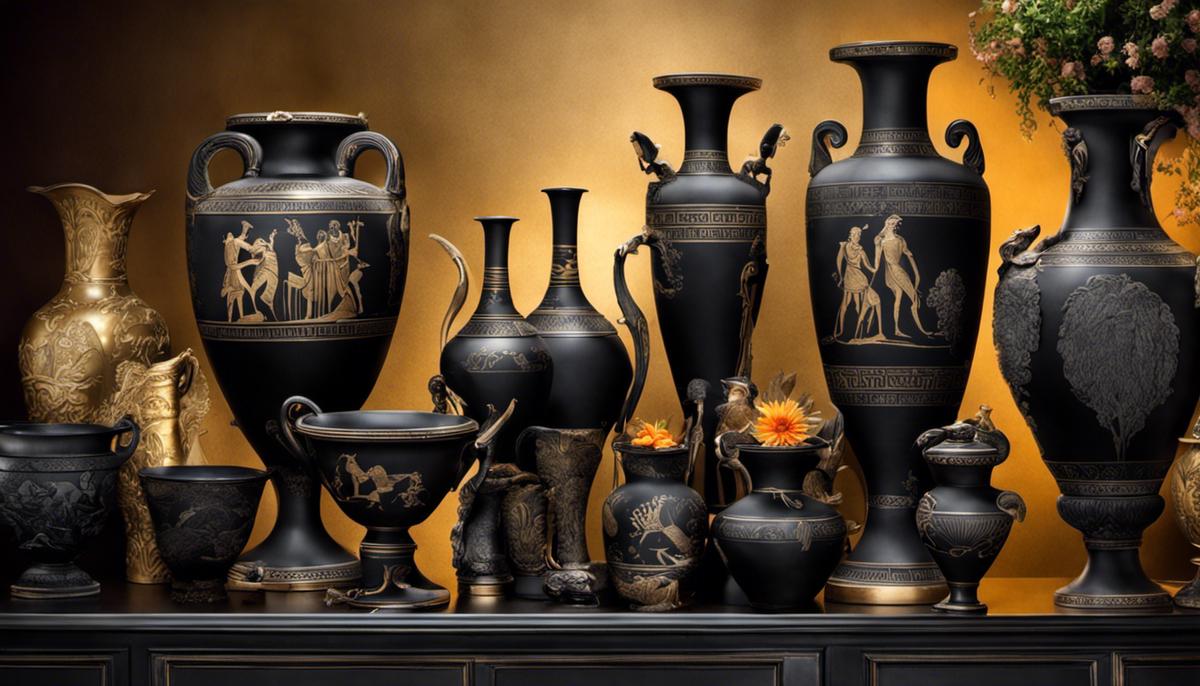
Symbolism and Interpretation
Black Vases and Their Powerful Symbolism
Artists have been using the color black for centuries due to its profound symbolism. In the realm of pottery, crafting black vases carries multiple symbolic meanings. Often, black is perceived as a color of power and strength, its bold allure commanding immediate attention and exuding a sense of mystery. It also connotes sophistication and a touch of formality; thus, black vases become the go-to choice for enhancing the elegance of high-end spaces.
Interpretations Surrounding Black Vases
The interpretation of black vases can vary greatly depending on the cultural context. For instance, in some Eastern philosophies, black signifies wisdom, depth, and infinity – considered as the “mother of all colors”. In some Native American cultures, black is seen as the color of the life-giving earth. Despite being often associated with negative emotions and concepts like death and mourning in Western cultures, its rich cultural symbolism in other parts of the world provides a more nuanced perspective on black vases.
Emotional Resonance of Black Vases
The emotional resonance of black vases may vary depending on an individual’s personal experiences and interpretations. Some may find black vases to be calming and grounding due to their suggestion of stability and permanence, while others might perceive them as mysterious or intense. Despite its oftentimes negative connotation, black color can also be seen as a display of power, elegance, and modernity. These varying interpretations add depth to the design and aesthetics of a vase when it’s colored black.
Concepts Represented by Black in Pottery
The color black in pottery can often represent sophisticated and powerful concepts. It can convey a sense of authority and control. With its strong, decisive presence, a black vase can be a bold statement piece in a living space, suggesting a powerful yet elegant aesthetic.
The color black in pottery can also symbolize creativity. With its limitless depth and perceived infinite expanse, black color can signify the boundless possibilities of human imagination. As a blank canvas, black vases could also represent potential – a space ready to be filled with ideas, shapes, and forms.
Adding Depth to Design and Aesthetics
Black vases can add substantial depth to both design and aesthetics. Their dark coloration can highlight and offset the other colors in a space, adding layers of contrast and a depth of perception. The understated elegance of black can balance out brighter, more vibrant colors. It creates a dynamic interplay of shadow and light, depth and space in a setting.
A black vase is much more than merely a functional item used to store flowers or serve as a decorative piece. Its rich symbolism and associations transform it into a cherished artifact that infuses any room with character, depth, and an intriguing touch of mystery.
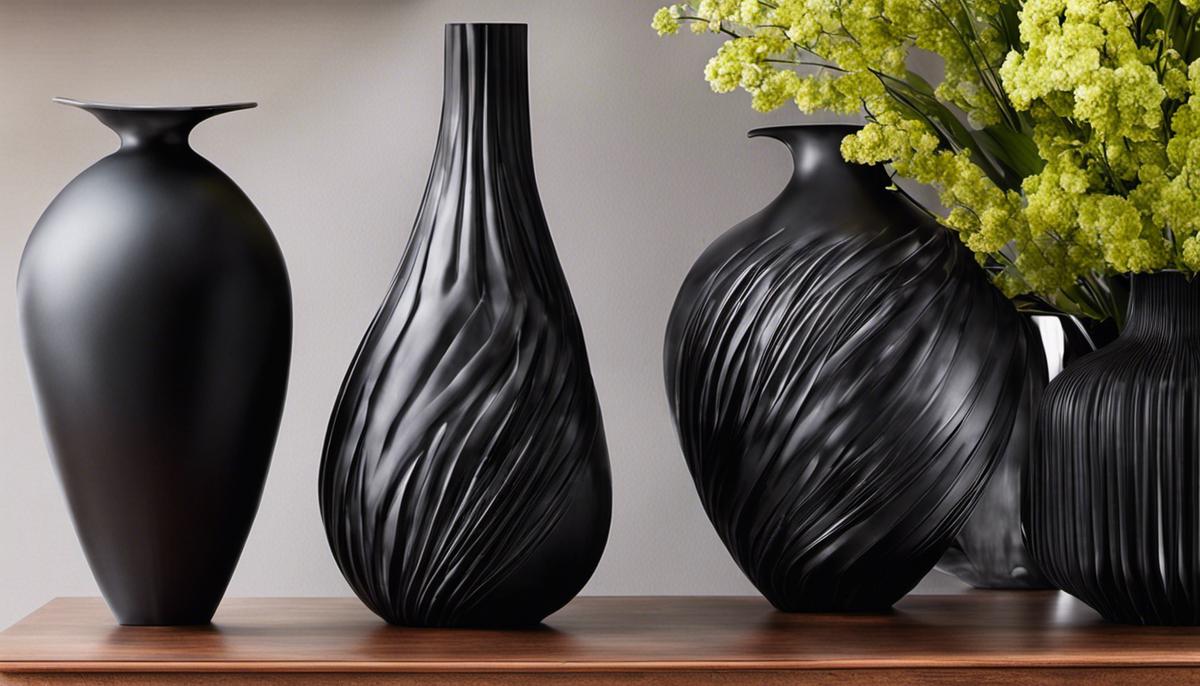
Manufacturing Techniques and Materials
The Artistry of Ceramic Crafting
The tradition of creating black vases is deeply rooted in our history, having influenced numerous cultures across the globe. The most common material used in their production is clay, specifically Earthenware or Stoneware. Earthenware clay is a popular choice due to its excellent modeling characteristics and hard-wearing nature. In contrast, Stoneware clay provides a more elegant finish and superior sturdiness.
Impact of Clay Type
The type of clay used plays a significant role in the vase’s final appearance. Earthenware, when fired at high temperatures, usually provides a reddish-brown color, but when treated with specific mineral-based coatings, it can result in a beautiful black finish.
Stoneware, on the other hand, naturally comes in a duller, muted tone. Still, with the right glaze, it can achieve a shiny black surface. Unlike earthenware, stoneware is waterproof even without being glazed, contributing to its popularity.
Black Pottery Technique
The traditional method of creating black pottery includes enclosing the newly made vase in a special treatment chamber during smoking process. The oxygen supply in the chamber is controlled, which interacts with the carbon to darken the clay, resulting in the characteristic black color.
Innovations in Modern Black Vase Creation
As time has moved on, so have the techniques and materials used to create black vases. In today’s pottery world, black vases are most commonly created using black underglaze. The underglaze contains high amounts of smectite minerals, which, upon firing, turn a deep, vivid black.
Quick-drying methods using heated cabinets for faster ceramic finishing have also been developed and are now regularly used. Technological advancements have allowed the use of 3D printing for ceramic vases, enabling more intricate designs and precision than ever before.
Environmental Implications
While clay is abundant and easy to use, harvesting the clay and manufacturing pottery does have environmental impacts. The extraction process can disrupt natural landscapes and sometimes requires substantial amounts of water. Furthermore, the energy required to fire the pottery is also significant. In response to such concerns, many modern manufacturers are seeking greener methods of production, such as using recycled clay, energy-efficient kilns, and environmentally friendly glazes.
The Art of Decoration
Regardless of the methods or materials used, the real magic lies in the decoration of the final piece. A variety of tools and techniques are employed to refine and beautify black vases. Relief patterns, etchings, and even hand-painting with contrasts of gold, silver, and other vibrant colors often enhance the captivating allure of black vases.
Collecting Black Vases
Black vases are widely sought after for their sleek elegance and versatility. They make superb centerpieces, stunning decor accents, and are even used functionally to hold flowers or other decorative items. Collecting black vases has become a passion for many, with both antiquities and contemporary pieces prized for their unique beauty and craftsmanship.
Exploring Black Vases Globally
For centuries, black vases have held a prominent position in ceramic traditions around the world. From Greece’s Black-Figure style to Rome’s African Red Slip ware, and all the way to Japan’s Raku ware, they’re a testament to a myriad of cultural practices. Each of these techniques results in a unique black finish, weaving a rich tapestry of vibrant ceramic artistry across different nations and civilisations.
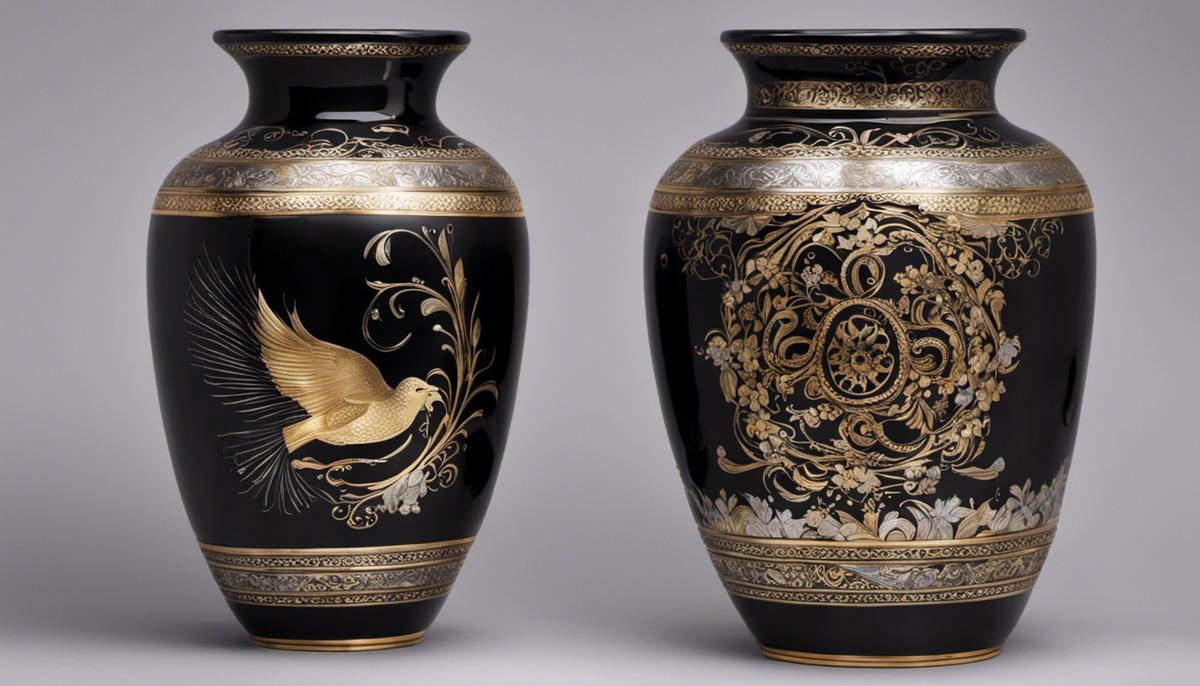
Types and Styles of Black Vases
Delving into Various Styles of Black Vases
Styles, shapes, and sizes of black vases come in a vast array, each contributing to the mood and aesthetic of a space in its own way. Consider the example of a cylindrical vase; it’s a versatile piece that can hold anything from long-stemmed flowers to delightful little gems or flickering candles. On the other end of the spectrum we have petite bud vases, perfect for adding a touch of minimalist elegance to bedside tables or window ledges. Then, there are the dramatic trumpet vases; these are designed to flare out at the top, making them perfect for wider arrangements and imparting a heightened sense of sophistication to any setting.
Materials Used in Creating Black Vases
Black vases can be crafted from a wide range of materials, which greatly impact their look, weight, and texture. Ceramic black vases, known for their sturdy and heavier feel, often feature matte black finishes that absorb and decentralize light. They may present a more traditional look. However, glass black vases, being clear or tinted, boast sleek and modern designs, offering shiny and reflective properties. Metal vases, typically made from iron, stainless steel, or aluminum offer an industrial touch to space while providing resilience against wear and tear.
Designs and Patterns on Black Vases
The beauty and aesthetic appeal of black vases also come from the unique designs and patterns that they bear. Geometric patterns give a modern and edgy look to the vases and fit well within contemporary room designs. Floral and paisley motifs on black vases present a contrasting, vibrant aesthetic which resonates with boho-chic and eclectic decor styles. Some vases may carry tribal and ethnic designs, adding a rustic or exotic feel to a space.
Black Vases and Decor Styles
Black vases can seamlessly fit into various types of decor styles. A minimalist decor scheme may benefit from a simple, sleek black vase, often of geometric design. For an industrial loft, black metal vases can complement exposed brickwork and raw surfaces. A maximalist space would appreciate eclectic patterns or a mix of several different black vases. Traditional or classic decor styles may favor ornate, ceramic black vases with intricate patterns.
Choosing the Perfect Black Vase
Revolving around factors including existing decor, purpose, and personal taste, the decision to buy a black vase should warrant thorough reconsideration. Before making a purchase, assess the spot where you’ll place the vase, whether that’s a mantle, table or shelf, as well as the kind of flowers or decorations it will carry. An essential part of this process is ensuring the vase fits well with the overall interior design without causing any aesthetic discord. Black, being a neutral hue, effortlessly infuses any decor style with sophistication and elegance.
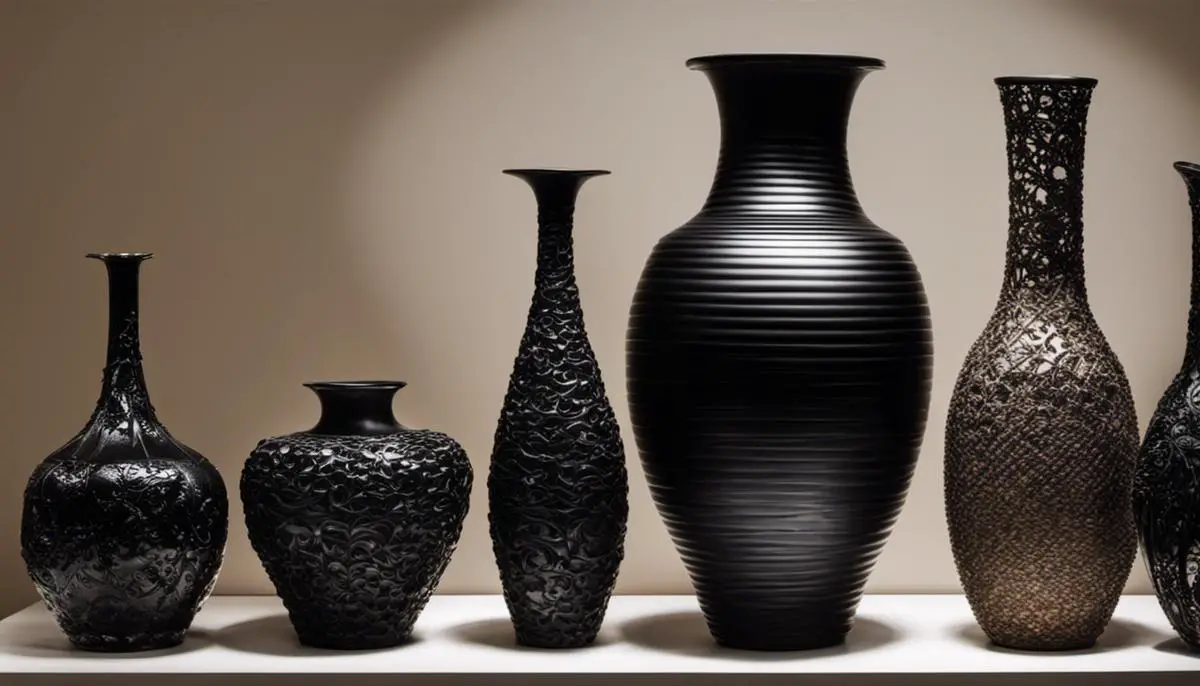
Caring for Black Vases
Proper Care for Black Vases
Black vases, available in an assortment of materials, not only contribute to your interior’s aesthetic appeal, but also require specific care and maintenance. The most straightforward measure to keep black vases in good condition is to handle them gently in order to avoid chipping, cracking, or other forms of physical damage.
Material consideration
The type of material drastically affects the vase’s longevity. Ceramic, glass, metal, or plastic are some materials used for making black vases. Accordingly, the care and cleaning methods for each material type differ significantly. For ceramic and porcelain vases, soap and warm water suffice for a thorough cleaning. Metal vases might need a little more attention, employing a soft cloth and appropriate metallic cleaner.
Plain water is suitable for cleaning glass vases. However, glass vases with a painted or matte finish may require special cleaning agents and gentle handling to maintain their status quo.
Color Considerations
Black is a versatile color but can show dust or residue more easily than other colors. Regular dusting and cleaning are therefore essential to maintaining the visual appeal of a black vase. A clean, soft cloth is generally sufficient for dusting, while for deeper cleaning, the type of solution used will depend on the vase’s material.
Cleaning and Maintenance Tips
To keep your black vases’ charm, maintain a regular cleaning regime. For ceramics and porcelain, avoid using abrasive tools or harsh chemicals as they can damage the vase. A soft cloth or sponge with mild soap and warm water are optimal.
For metal vases, a soft cloth with a proprietary metal cleaner should do the trick. Polishing occasionally will also keep it looking like new. However, always remember to rinse the vase thoroughly to remove any soap or cleaning solution residue which could, over time, negatively affect the vase’s appearance.
Storage
If not in use, it is best to store black vases in a secure, dry location free from extreme temperatures. Line the storage area with soft material to prevent scratches or dinging. If the vase is particularly large or heavy, consider storing it on a lower shelf or the floor to reduce the chance of accidental damage.
When storing, the vase should be clean and dry to prevent the buildup of mildew or bacteria. Vases with lids should be stored with the lid off or ajar to allow for air circulation, further reducing the chance of bacterial or fungal growth.
Overall
Taking care of black vases involves a mix of safe handling, regular cleaning, material-specific care, and appropriate storage. With these tips, you’re well on your way to preserving the aesthetic and functional integrity of your black vases.
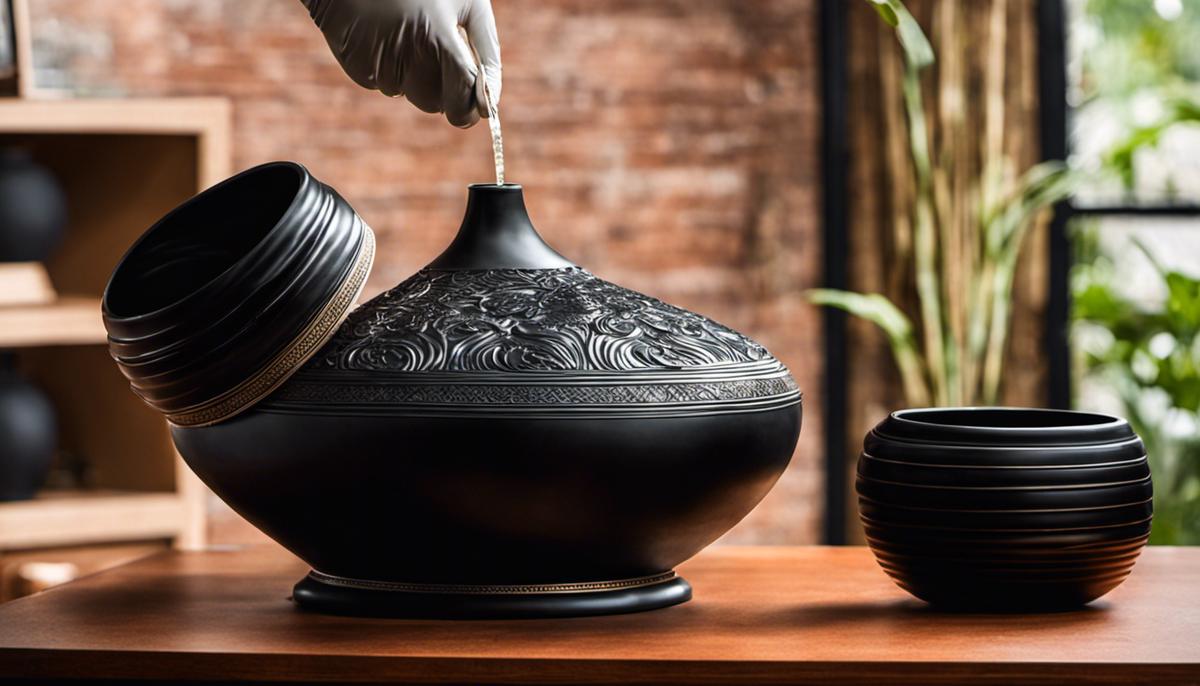
Having traversed the vast spectrum of black vases, their historical progression, intrinsic symbolism, diverse types and styles, fabrication methods, and maintenance techniques, the understanding of these ceramic beauties transcends beyond their external appeal. The true beauty of black vases lies in the depth they offer – the cultural insights, the emotional undertones, the craftsmanship they exhibit – painting a rich tapestry of human creativity and cultural evolution. With a newfound appreciation for these stunning pieces, you can now look at black vases in your home or a pottery store and see more than just objects; you see pieces of artisanal history, of emotion, of symbolism. Care for them well, and they will continue to enhance your spaces with their timeless elegance for years to come.

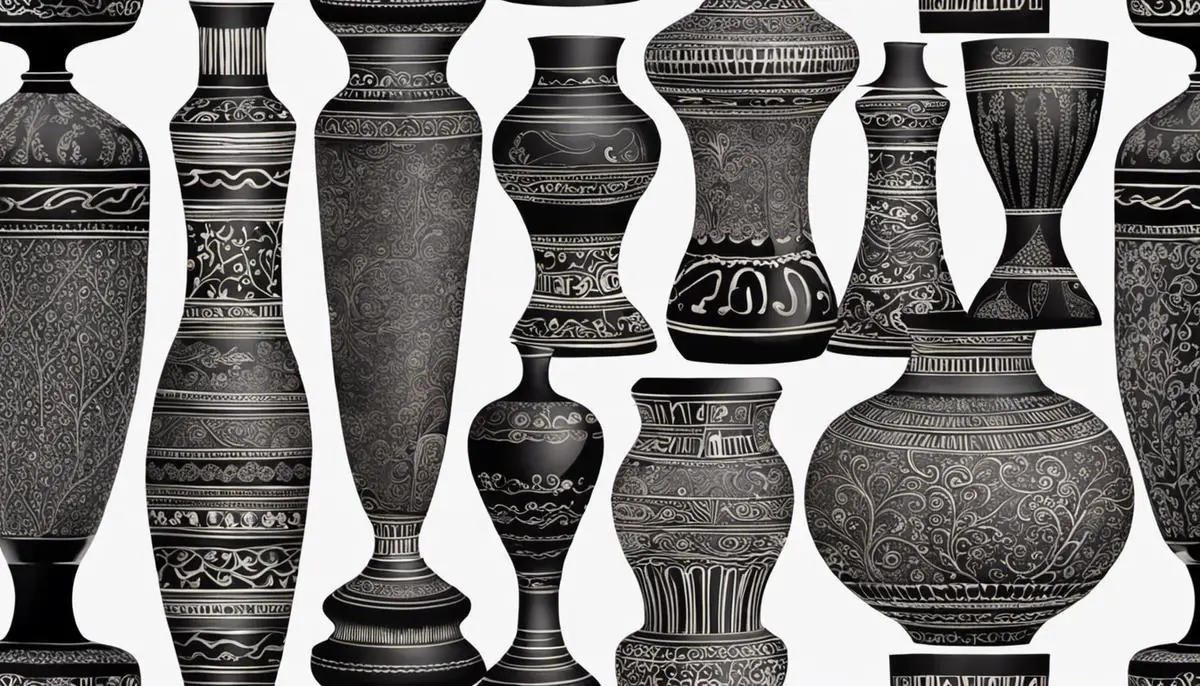



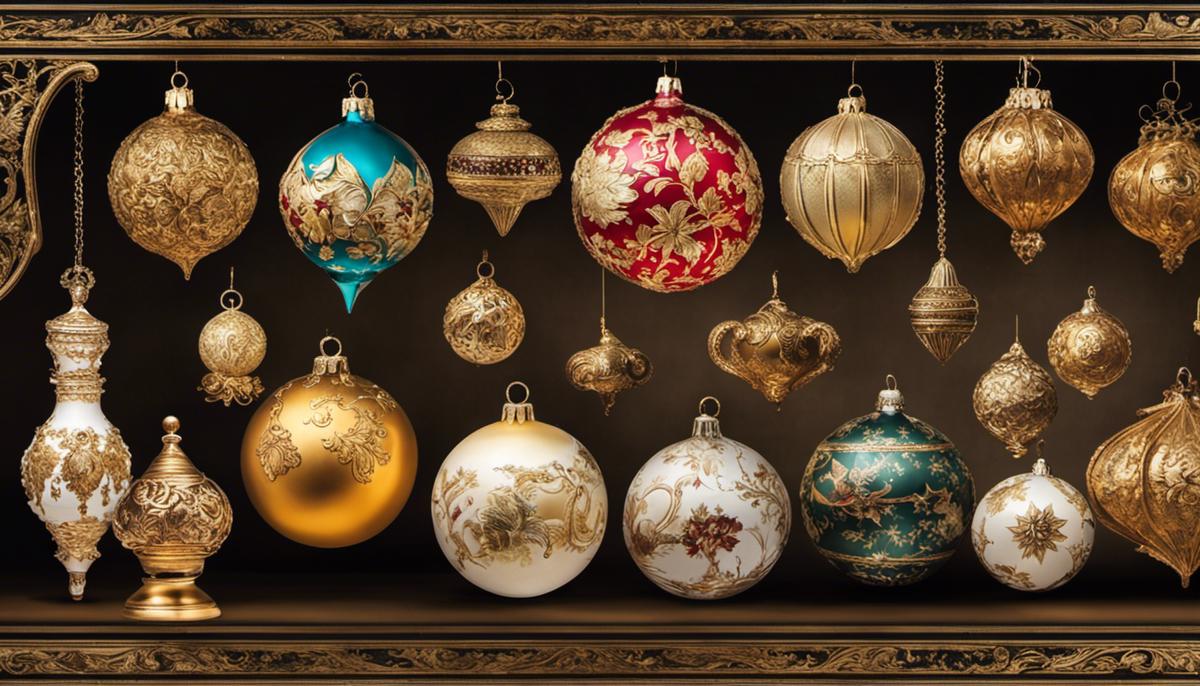



Leave a Reply